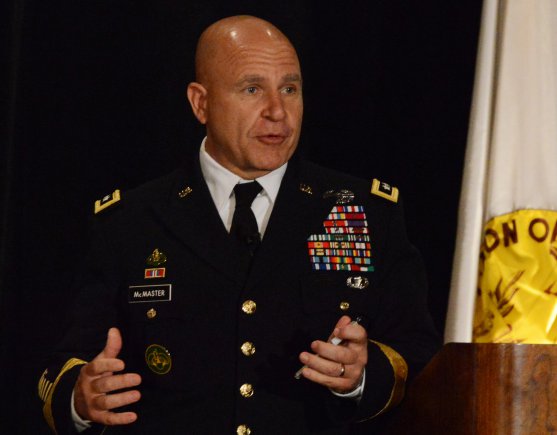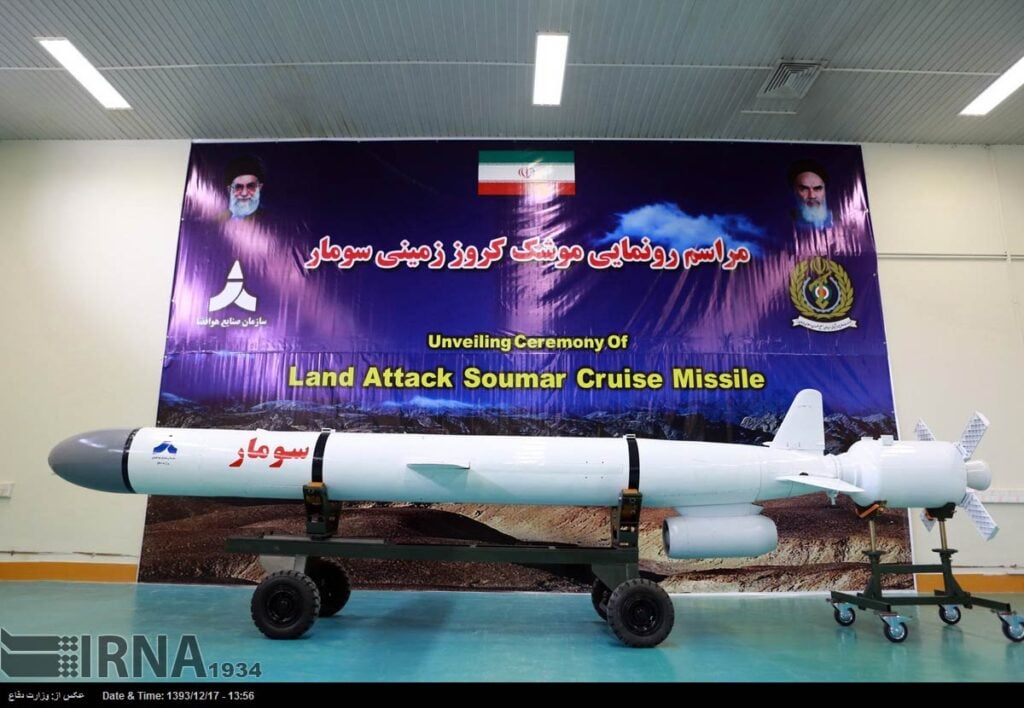White House Needs To Curb Iran’s Cruise Missiles
Posted on

Lt. Gen. H.R. McMaster
H.R. McMaster, President Trump’s newly appointed National Security Advisor, must ensure the new administration reverses a decades-old pattern of neglecting Iran’s nuclear-capable cruise missile capabilities and their importance to Iran’s nuclear weapons program. The White House had no trouble marshaling evidence for its decision to put Iran “on notice” last month but then-National Security Adviser Michael Flynn failed to mention an Iranian nuclear capable cruise missile test earlier that week.
Usually, it’s Iran’s ballistic missiles that grab the headlines. The largest such arsenal in the Middle East, they can strike anywhere in the region, and Tehran has transferred thousands to Hezbollah in Lebanon. Iran also tests new nuclear-capable versions regularly, as they have done in recent weeks. During Iran’s annual military parade, the Islamic Revolutionary Guards Corps (IRGC) inscribes its most bellicose threats against Israel on these missiles.
Despite their design as nuclear delivery vehicles, the Joint Comprehensive Plan of Action (JCPOA) on Iran’s nuclear program places no restrictions on these weapons. In fact, U.N. Security Council Resolution 2231 implementing the deal dropped the legally-binding ban on Iranian ballistic missile development, replacing it with a mere admonition against such activities. Nevertheless, even this much weaker language still encourages international condemnation, and occasionally sanctions, when Tehran conducts new tests.
That same resolution, like the JCPOA, does not address cruise missiles. This is somewhat unsurprising, as Iran first acquired a small handful of nuclear-capable cruise missiles very surreptitiously. In 2000, Tehran obtained twelve Russian

Iran’s Soumar cruise missile
Kh-55s from Ukraine through front companies, corrupt officials and falsified contracts, with several individuals involved dying mysteriously. This transaction occurred well before crippling sanctions focused attention on Iran’s elaborate shell games to hide its aggressive procurement efforts.
Nevertheless, this small arsenal could ultimately prove to be a strategic game-changer for Tehran. The most recent cruise missile tested – the Soumar – is a reversed-engineered version of the Kh-55. This suggests significant indigenous production capability, despite years of economic sanctions and arms embargoes. It helps that the IRGC dominates the economic sectors furnishing raw and finished materials for these weapons, as does the JCPOA’s sanctions relief for these industries.
The nuclear deal will raise this high ceiling for Iran’s cruise missile program even further. It rescinds the conventional weapons embargo no later than 2020. No later than 2023, it permits financing to develop Iran’s nuclear delivery systems and unfreezes assets of Iranian entities blacklisted for proliferation-sensitive activities.
By boosting Tehran’s ongoing development of turbofan and turbojet engines, and its plans to develop supersonic cruise missiles, these windfalls could swell an arsenal of more sophisticated, longer-range cruise missiles that will be harder to intercept. Terminating the arms embargo will allow Iran to simply buy advanced models like the stealthy Kh-55 upgrade used by Russia in Syria.
Israel recently completed testing the David’s Sling air defense system, which can intercept cruise missiles. But the rest of the Middle East is falling behind Iran. U.S. allies from the Persian Gulf to Cairo – all within range of the Kh-55 and Soumar – are buying advanced weapons at record levels. Yet these are mostly offensive systems, ill-suited for cruise missile defense.
The United States and its allies must act to halt Iran’s progress. Unlike its predecessor, the Trump Administration should utilize the nuclear deal’s Procurement Working Group to block Tehran’s illicit missile technology acquisition efforts. It is time to demand verification – as authorized by the JCPOA – of the end use of sensitive Iranian imports. Because Resolution 2231 was passed under Chapter VII of the U.N. Charter, the United States and its partners should consider enforcement actions, including sanctions and use of force, against any material breaches by Iran.
Furthermore, despite sanctions on seemingly everything else, no U.S. law specifically targets Iran’s nuclear cruise missile program, nor are such provisions included in pending ballistic missile sanctions legislation. This can be remedied easily, without contravening the JCPOA.
The United States itself also must get serious about cruise missile defense. The Pentagon should forward-deploy a fraction of its growing Aegis-equipped fleet to the Persian Gulf, as it does in Europe and Asia. By avoiding oceanic transits, fewer of these ships – which recently intercepted cruise missiles fired by Iran-backed Houthis in Yemen – could provide the same defense against Iranian missiles. This should form part of a new multi-layered air defense system including David’s Sling, which would benefit Gulf allies already targeted by Houthi missiles. Furthermore, the advanced U.S. aircraft purchased by these allies could be equipped to intercept cruise missiles.
The new administration is making clear its intent to stop tolerating Iranian aggression. Translating this into action means the United States can no longer turn a blind eye to Iran’s nuclear cruise missile program.
Jonathan Ruhe is the associate director, and Blake Fleisher is a policy analyst, at the Jewish Institute for National Security of America.
Subscribe to our newsletter
Promotions, new products and sales. Directly to your inbox.
